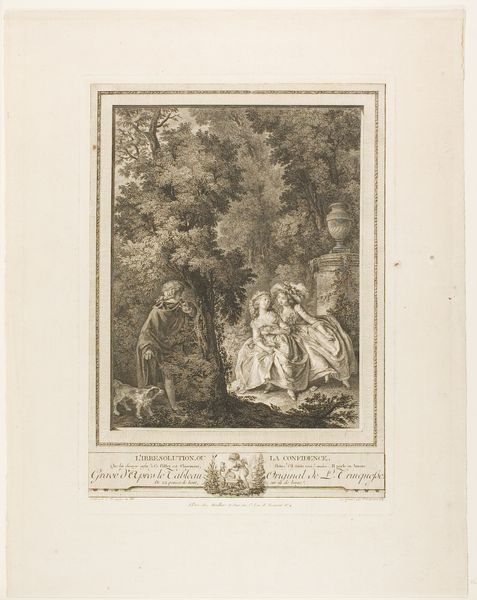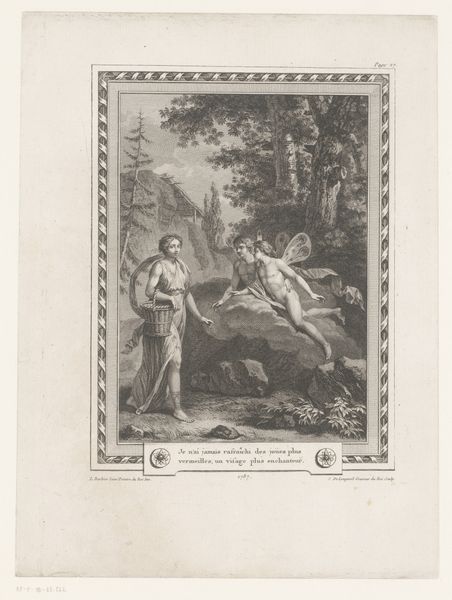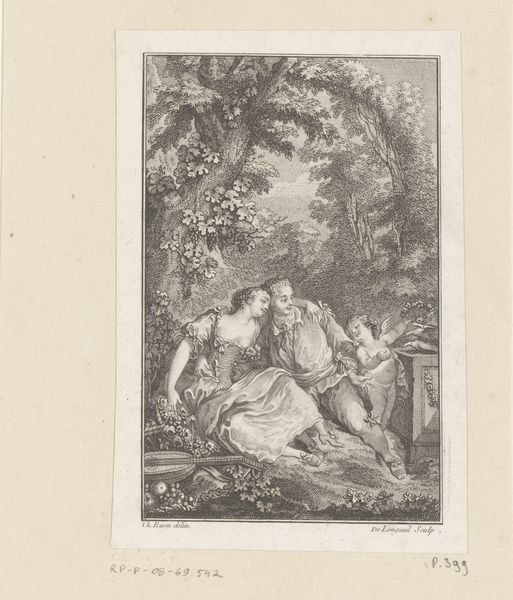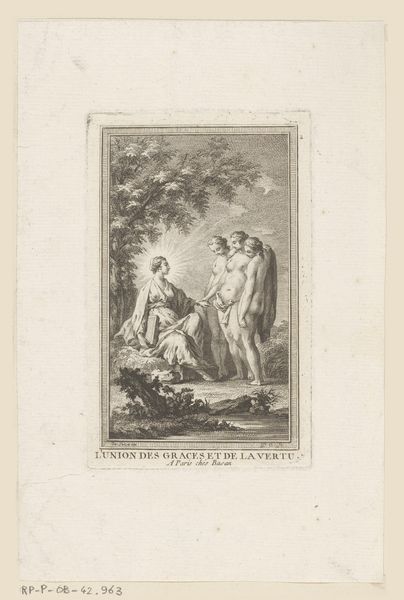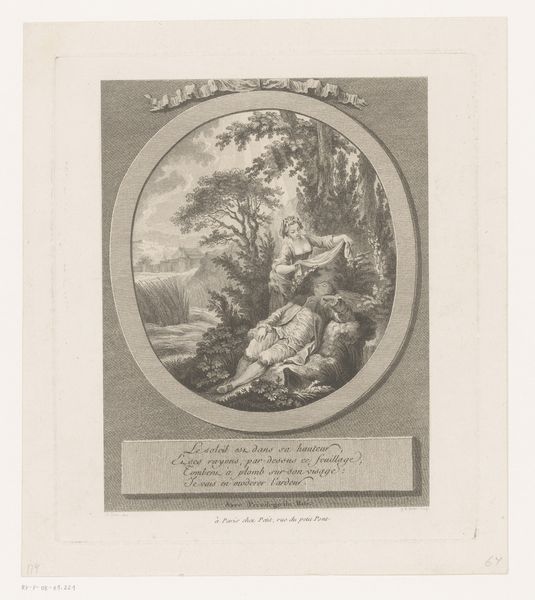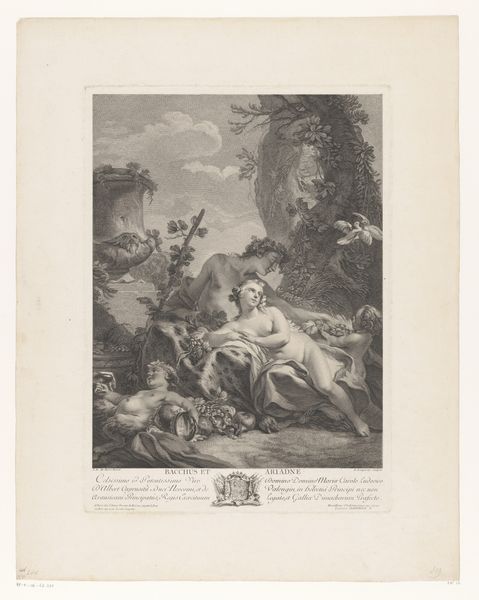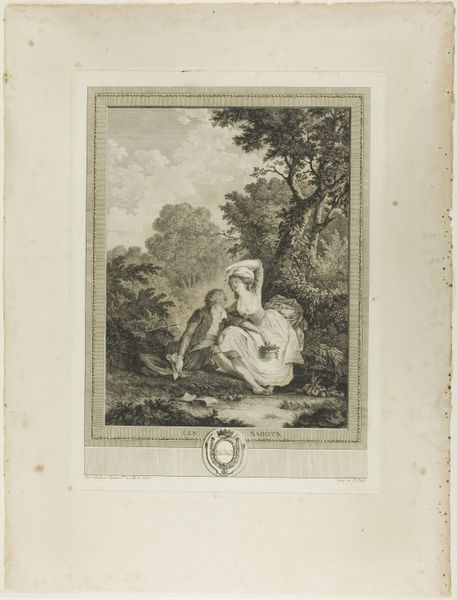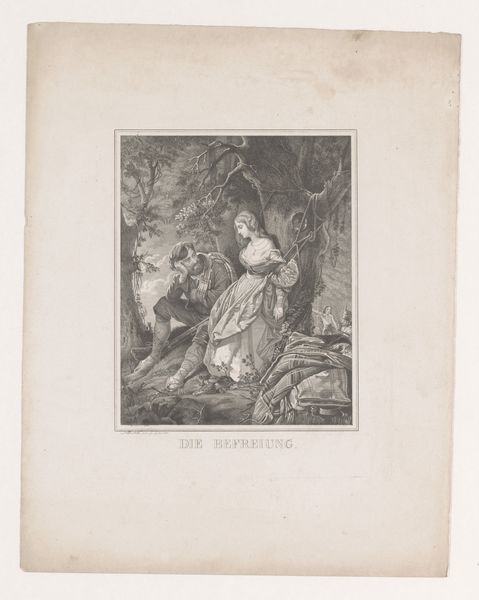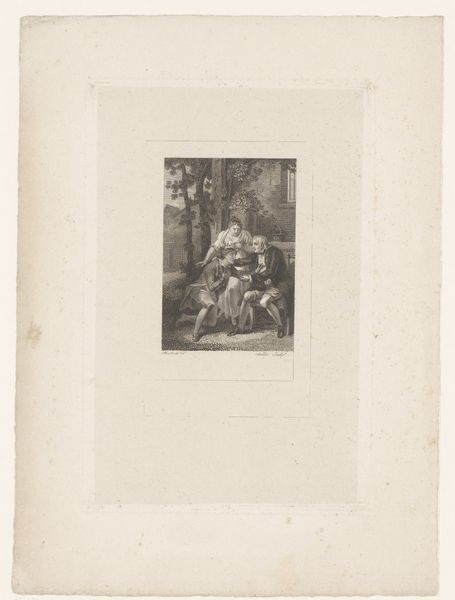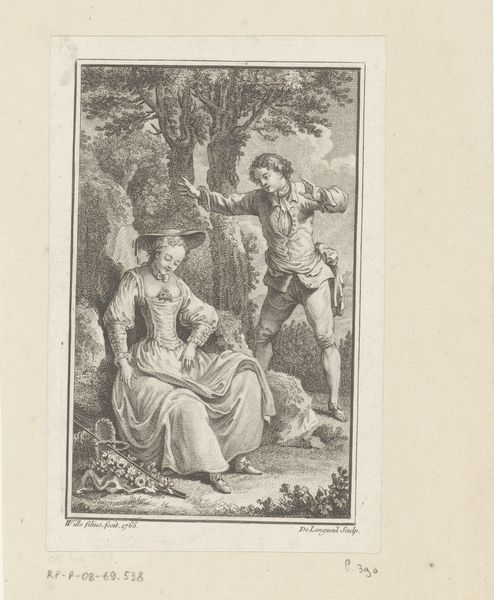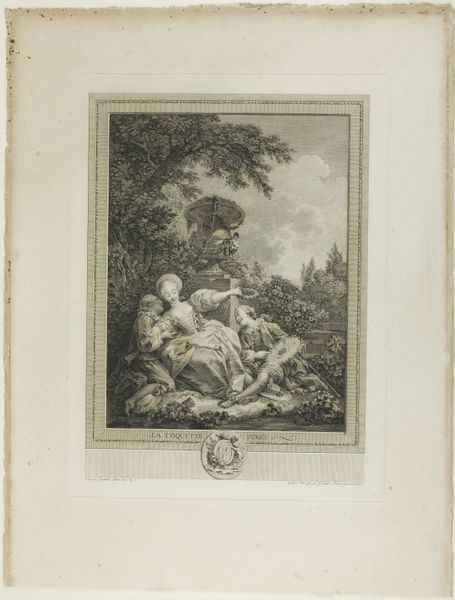
Dimensions: 290 × 223 mm (image); 401 × 288 mm (plate); 528 × 417 mm (sheet, folded)
Copyright: Public Domain
Editor: Here we have Jean Antoine Pierron's etching from 1788, "The Too Rapid Return." It's delicate and depicts an encounter in what looks like a lush garden. There’s an almost voyeuristic feel to the piece. What do you see in it? Curator: This etching provides a window into the material culture of late 18th-century France. We must consider the role of printmaking as a reproductive technology, distributing images to a wider audience. What does this tell us about access to art and visual culture at the time? Think about the paper it's printed on; a tangible object representing capital and its dissemination, and the labor needed for the image reproduction and its social function in circulating ideas. Editor: That's a different way of looking at it. I was focused on the image itself, the romantic encounter, but thinking about it as a mass-produced object changes the perspective. How would you say this challenges the typical understanding of "high art" then? Curator: Precisely! The image's content—the romantic scene—becomes less about idealized love and more about the economics of desire. Etchings like these weren’t just consumed visually. They fueled conversations, decorated homes, and became part of the social fabric. We should consider where the original drawing fits into a culture valuing those drawings. The print flattens the experience for more consumption, removing the touch of the master hand. Does this democratization challenge notions of artistic genius tied to unique production? Editor: That’s really insightful. It’s easy to get lost in the romantic narrative, but considering the material production and its accessibility reveals a lot more about the society it came from. I hadn't considered how it democratizes art. Curator: Exactly. And think about the tools involved—the etching needle, the printing press—and the skilled artisans who operated them. Their labor shaped this artwork as much as the artist’s initial conception. These "secondary" contributions are frequently omitted from our account of the artist. Editor: I never thought about it like that, focusing on the materials and labor involved. Thanks! Curator: My pleasure. By investigating the material conditions of art, we uncover deeper connections to history, class, and cultural values.
Comments
No comments
Be the first to comment and join the conversation on the ultimate creative platform.
